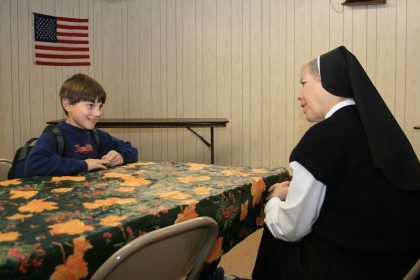
The line is a staple of province communications, from the website to vocation materials: “Ministry in the United States began in 1923 in a small mission on the Lower Brule Indian Reservation in South Dakota.”
This birthplace of the province is briefly noted in just about every descriptive piece written about the SCJs in the United States.
From that small foothold in the country, the Priests of the Sacred Heart continued their mission in the country, expanding to Mississippi, Texas, Wisconsin and many other locations. Yet a commitment has remained to its birthplace, to the spot where Fr. Matthias Fohrman, the first SCJ in the United States, began ministry to Native Americans and other residents of South Dakota’s rural reservations.
Well, not EXACTLY on the same spot as Fr. Fohrman. That’s under several feet of water as the result of a nearby dam. The town –– and St. Mary’s Church –– where the SCJs began ministry, relocated in 1962.
Much has changed since 1923, but some things remain the same.
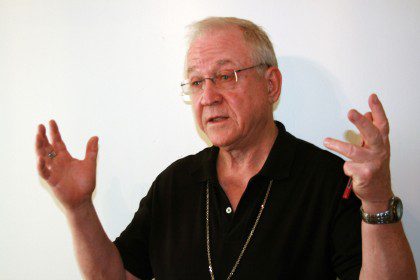
This too is a line that is often repeated. You will see it again in the story posted on the South African Province. Though they are continents far from one another, there are some interesting similarities in the two SCJ missions. Both South Dakota and South Africa have their roots in the German Province.
In 1923 German SCJs began ministry in South Dakota, but the same year they also set foot for the first time in South Africa.
Immigrants began both missions, and now both missions continue with the assistance of international SCJs. In South Africa, ministry is a joint effort of German, American, Polish and most recently, Indian SCJs who work together with indigenous South Africans to continue the congregation’s commitment to the country.
In South Dakota, American SCJs now minister with the help of the Indonesian Province. Since January, Fr. Christianus Hendrik, SCJ, has been a part of the Lower Brule Pastoral Team. He is the first of several Indonesian SCJs who are expected to serve in South Dakota.
Fr. Hendrik is part of a pastoral team that includes Fr. Bernie Rosinski, SCJ, and Fr. Joe Dean, SCJ, as well as Dn. Steve McLaughlin (a permanent deacon), Srs. Mary Clement Eiden, SCC, Charles Palm, OSB, and Elaine Tworek, SLW, and two lay pastoral associates –– Tom Howell and Cora Weiand.
Together, the team serves six parishes in two dioceses: Rapid City on the west side of the Missouri River, and Sioux Falls on the east side of the river.
The team ministers not only to a variety of parishes, but to a variety of cultures as well. On the east side of the river, two parishes are made up of primarily Native Americans enrolled in the Dakota tribe on the Crow Creek Reservation, while the third is mostly Anglo. On the west side, two parishes are primarily Anglo, and parishioners in the third are mainly Lakota Native Americans enrolled in the Lower Brule Sioux Tribe on the reservation of the same name.
Native American culture
To prepare for ministry among Native Americans Frs. Joe and Hendrik took part in a workshop with the Basic Directions Institute, operated by the Jesuits at a retreat center in the Diocese of Rapid City. The week-long program “was extremely helpful,” said Fr. Joe. “It explained things that I had already witnessed and put perspective on them.”
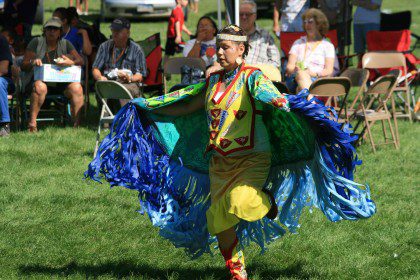
All three SCJs said that it is at a funeral where those new to reservation ministry really come face to face with Native America culture.
A funeral for a Native American includes two nights of wakes and then the funeral. A prayer service is held both nights, and on both nights, people are invited to share memories about the deceased. “This can go from 30 minutes to two hours or more,” said Fr. Joe. “And then there is the dinner.”
The second night is similar to the first. “People can go as long as they want,” said Fr. Joe. “Things happen, they say, ‘when they are meant to; they begin and end when they are meant to.’”
The team often finds itself navigating between two interpretations of time, the more rigid “industrial” time, that most Americans are used to, and a looser sense of time “that is found in many cultures, including those on the reservations,” said Fr. Joe.
On the third day, there is a short prayer service and a viewing of the body before the actual funeral begins. It is also a time for those gathered to greet each other. Depending on “when things are meant to end” the viewing, greeting and finally the funeral itself can go anywhere from a couple of hours to a full day.
“You need to be flexible,” said Fr. Joe.
It’s a phrase that applies to much of the pastoral team’s ministry.
A three-day wake and funeral may seem long to most Americans but all three SCJs note that it is also an important opportunity.
“I am going to speak to more people at a funeral than at any other time,” said Fr. Joe, noting that the church often fills for a funeral with people who might not normally come to a liturgy.
“Keeping that in mind, I always use Eucharistic prayer N. 4 because it is the biggest narrative,” said Fr. Joe. “You get basically the whole story of salvation from the Catholic perspective in that prayer.”
The funeral is a time to reach out to many who might not often hear a Sunday homily. “You never know who you might reach,” said Fr. Joe, who tries to bring some Native American traditions to his homilies, such as sharing a bit of his own background.
“Usually I start by saying my name, and then explain that I am a priest and member of the Priests of the Sacred Heart,” said Fr. Joe. He then goes on to share what he has in common with those gathered: “I tell them that ‘I have a brother and five sisters. Of my elders, only one, my Aunt Mary, is among the living. That means that we all have something in common.’ I would never do that in an Anglo community. We [priests] don’t call attention to ourselves in that way.”
But connection is something Fr. Joe learned is important in ministry with Native Americans. “I saw one of the speakers do this at the Basic Direction Institute and thought that it would be good to adapt,” he said.
The sharing of culture is not a one way street, as Fr. Hendrik soon learned. With dark skin and long black hair, initially many people in South Dakota – Anglo and Native American –– mistake him for a tribal member.
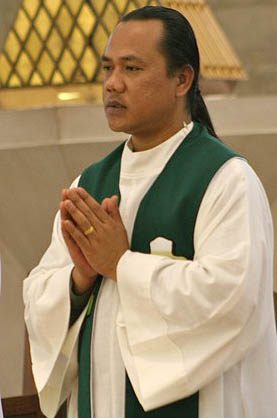
“When they learn that I am from Indonesia they are very interested,” said Fr. Hendrik. “They ask me to show them where Indonesia is on the map, and what life is like there. I tell them about being a Christian in a Muslim country and they get a better understanding of what it is to have freedom.”
New to parish ministry
Although much of the work of the pastoral team revolves around parish ministry, none of the three SCJs currently on the team has spent significant time in a parish, or at least not a parish in the United States.
Much of Fr. Bernie’s past experience has been in academics and administration, including service at the SCJs’ generalate (community headquarters) in Rome. Fr. Joe also has an extensive background in academics, having taught at Sacred Heart School of Theology for many years. Prior to his assignment in South Dakota he had a busy schedule giving parish missions around the country.
Fr. Hendrik’s parish ministry experience was in the missions of Indonesia. He was ministering in West Papau when a bout with malaria cut his assignment short. Once recovered, his provincial superior asked that he go to the Philippines where help was needed. He came to Sacred Heart School of Theology’s ESL program to learn English in preparation for that mission.
While he was in the States Fr. Hendrik’s provincial superior suggested a change in plans. He still wanted him to be a missionary, but instead of the Philippines, Fr. Hendrik was asked to consider South Dakota.
How did he feel about the change in plans?
“If I am needed here, I’m happy to go,” said Fr. Hendrik.
That same sense of availability is what brought Frs. Bernie and Joe to South Dakota.
Several months after he retired Fr. Bernie was on a cruise ship, enjoying a trip planned for his golden jubilee of religious life. The trip came a few months after Fr. Bernie’s retirement from full-time ministry. It was a retirement that left him longing for something else, but he wasn’t sure what. During the cruise, Fr. Bernie decided to also make a retreat. As the ship moved along the seas Fr. Bernie spent three to four hours a day reflecting and journaling, seeking “a decision according to God’s will,” he said. “What I am going to do?” he asked the Lord.
The answer? “It became clearer to me over the retreat that I still had a few arrows in my quiver,” he said.
Back at the Provincialate Fr. Tom Cassidy, SCJ, had already come to the same conclusion. The provincial superior wondered if Fr. Bernie would be willing to come out of retirement to work in Lower Brule.
“I accepted,” said Fr. Bernie, who is now 76, “and I’m glad I did… Talk about fitting a round peg into a round hole! Everything worked out so well.” Though serving in the congregation’s first mission in the United States was never something that Fr. Bernie had given thought to, it’s become a ministry close to his heart.
“Availability can do that,” he said. “It can lead you to things that you never imagined possible.”
With Fr. Joe, it was also a response to a request from the provincial superior that led him to South Dakota. But instead of an individual request, it was one made to the province as a whole. If the province wasn’t able to find people willing to minister in Lower Brule, the SCJs might be forced to leave a ministry that the congregation had served for 85 years.
“I thought to myself, ‘I can do anything for three years,’” said Fr. Joe Dean. And he said as much in an email to Br. Frank Presto, SCJ, provincial secretary.
“Within 24 hours Fr. Tom was on the phone, asking Fr. Joe, ‘Did you really mean that?’”
Although he didn’t expect such a quick response, Fr. Joe said that he really “did mean that,” and a few months later he was headed to Lower Brule for that three-year assignment.
“About three months later, I realized that I would be here a lot longer,” said Fr. Joe. It wasn’t that he felt like he would be “stuck” there, but that “I soon learned that short-term commitments have absolutely no credibility out here, especially with the Native American community. One of the first questions that I was asked by Native Americans and Anglos was ‘How long are you going to be here?’”
The answer? He tells them “One day at a time,” but he easily pictures himself there until he is 70; a ten-year commitment.
A Dehonian ministry
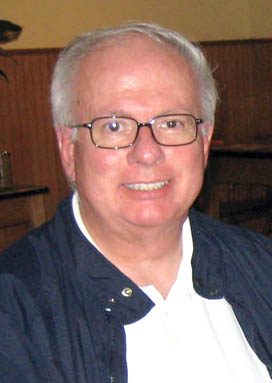
What is Dehonian about ministry on the Lower Brule and Crow Creek Reservations? What does it matter if the Priests of the Sacred Heart are in South Dakota?
Fr. Joe answers the question by asking another: “What would South Dakota be like if the SCJs had not come here? There would be no St. Joseph’s Indian School. The presence of the Catholic church, or at least a priestly presence, would not be as strong on the west side of the river.
“The Priests of the Sacred Heart have long worked with marginalized groups. Working with Native Americans in the United States is something that SCJs should be doing.”
Fr. Hendrik also sees ministry in South Dakota as a significant call to the SCJs. But he widens that call beyond the U.S. Province.
“If we believe that this is an important ministry, a ministry that we are called to as SCJs, then as a whole congregation we have to take responsibility for it; that’s why I am here.”

